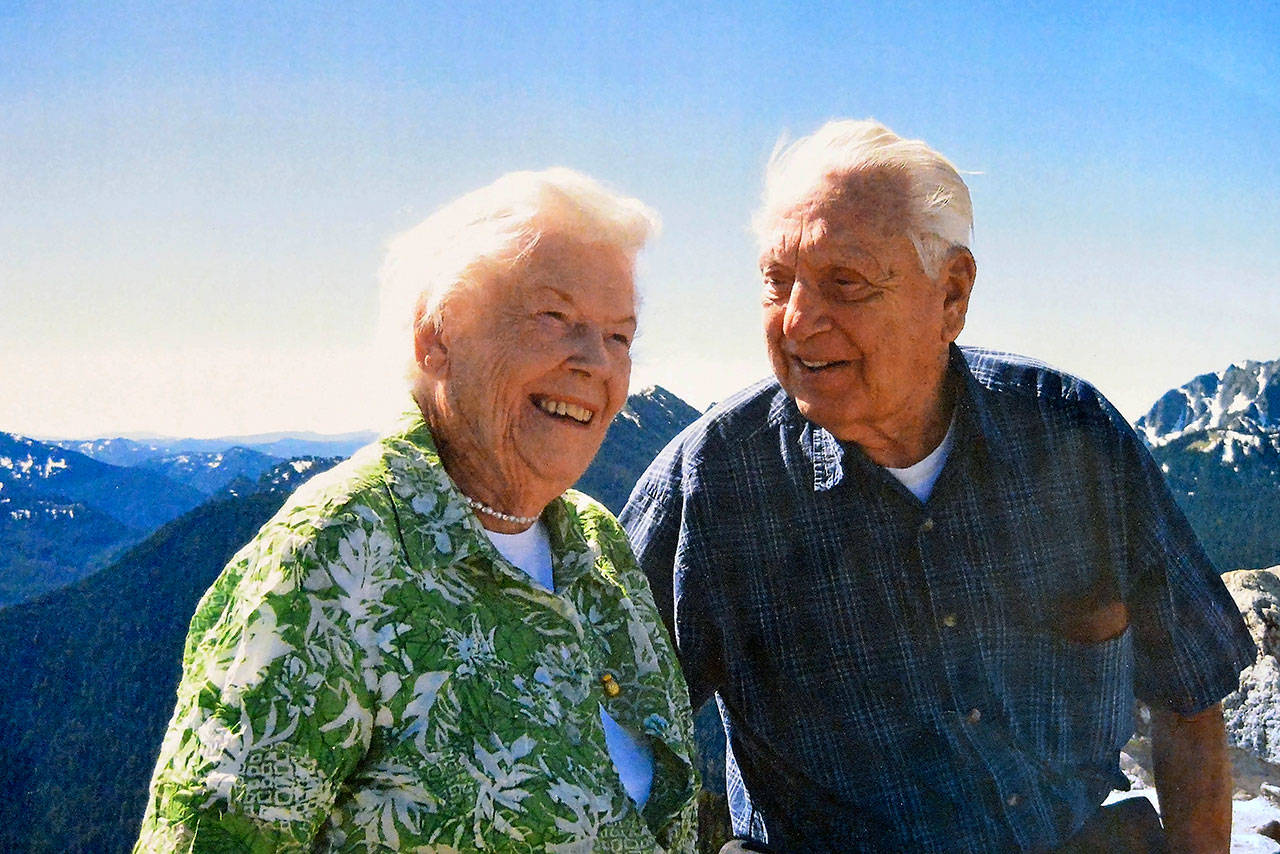By Brent Rawls/Wesley Homes
Fred Gangl, a World War II veteran and five-year resident of Wesley Homes Lea Hill, is credited with helping to develop the B-2 Stealth Bomber.
Born in Cincinnati, Ohio, Gangl went into the service at 18 years of age. He was in the Navy during WWII, from February 1943 to February 1946.
He spent 2½ years in the South Pacific on the USS Blue Ridge, the Appalachian-class command ship of the U.S. Seventh Fleet and amphibious force. He operated as the quartermaster in assistance to the navigator on the bridge.
Gangl was helmsman on the ship that took General Douglas MacArthur to the Philippines in the Pacific theater during WWII and helped lead the invasion during the Battle of the Philippine Sea. He also had Vice Admiral Thomas C. Kinkaid and Vice Admiral Daniel Edward Barbey on board the ship.
By the end of the war, Gangl returned to his hometown to earn his degree in aeronautical engineering at the University of Cincinnati.
He also returned to reunite with his childhood sweetheart, Bernadine. They had known each other since grade school. Though they went to different high schools, they kept in touch throughout his years in the service. Gangl asked Bernadine to teach him how to ice skate. Shortly after, they married in 1946 and had two sons.
The couple moved to Dayton, Ohio, where they both worked at the Wright-Patterson Air Force Base in 1951. Gangl became an analyst for Technical Intelligence, and his work involved studying Russian and Chinese aircraft activity. Meanwhile, his wife worked at the air base as a medical secretary. She worked with Lt. Col. John Stapp, who was known as “the fastest man on earth” because of his research on the effects of acceleration and deceleration forces on the human body. Using a rocket propelled sled, Stapp would personally test the effects of G-forces at speeds as high as 632 MPH.
In 1981, the Gangles moved to California, where he began work on the Stealth Bomber at the Northrop Corporation, the leading U.S. aircraft manufacturer of its time. Gangl joined the organization as a performance engineer during the proposal stage of the project. There were preliminary plans, but it was Gangl’s job to turn the plans into reality by figuring out how the plane could actually work.
“The B-2 Stealth Bomber was a challenge to build. We were essentially building ‘a flying wing,’ ” Gangl said.
A “flying wing” is a tailless, fixed-wing aircraft without a conventional fuselage. The crew, payload, fuel and equipment are meant to be housed inside or on top of the main wing structure.
Gangl enjoyed developing the stealth bomber. His work involved first doing the paperwork to predict data and then the wind tunnel tests where he would collect data on drag and inlet/outlet tests on getting the air into the engine. With a five ton internal payload requirement, the plane had to be able to carry the same 10,000-pound payload as the B-52 and yet have a much smaller radar signature.
“Everything that produced heat signatures had to be on the top of the plane so they wouldn’t be detected as easily from the ground,” Gangl said.
For Gangl, the most interesting part about the whole experience was being required to work on the project in complete secrecy for five years. He couldn’t even talk to his wife about it, though she did have an understanding of the nature of his work.
After the team finished developing the plane, Gangl didn’t want to remain to analyze the flight data. Instead, he decided to retire shortly thereafter.
Gangl said he’s thankful for the career he has had, though out of everything, the time he spent with his wife Bernadine has been the best thing to have ever happened to him.



